Sycamore is a name which has been applied to several types of trees, but with somewhat similar leaf forms. The name derives from the ancient Greek συκόμορος (sūkomoros) meaning "fig-mulberry".

Zinnia is a genus of plants of the tribe Heliantheae within the family Asteraceae. They are native to scrub and dry grassland in an area stretching from the Southwestern United States to South America, with a centre of diversity in Mexico. Members of the genus are notable for their solitary long-stemmed 12 petal flowers that come in a variety of bright colors. The genus name honors German master botanist Johann Gottfried Zinn (1727–59).

The spermatheca, also called receptaculum seminis, is an organ of the female reproductive tract in insects, e.g. ants, bees, some molluscs, Oligochaeta worms and certain other invertebrates and vertebrates. Its purpose is to receive and store sperm from the male or, in the case of hermaphrodites, the male component of the body. Spermathecae can sometimes be the site of fertilisation when the oocytes are sufficiently developed.
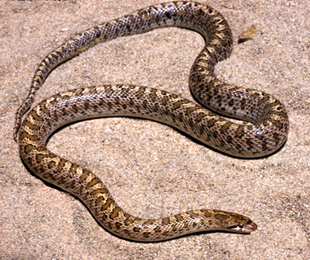
Arizona elegans is a species of medium-sized colubrid snake commonly referred to as the glossy snake or the faded snake, which is endemic to the southwestern United States and Mexico. It has several subspecies. Some have recommended that A. elegans occidentalis be granted full species status.

The Algodones Dunes is a large sand dune field, or erg, located in the southeastern portion of the U.S. state of California, near the border with Arizona and the Mexican state of Baja California. The field is approximately 45 miles (72 km) long by 6 miles (9.7 km) wide and extends along a northwest-southeast line that correlates to the prevailing northerly and westerly wind directions. The name "Algodones Dunes" refers to the entire geographic feature, while the administrative designation for that portion managed by the Bureau of Land Management is the Imperial Sand Dunes Recreation Area. In 1966, Imperial Sand Hills was designated as a National Natural Landmark by the National Park Service. The Algodones Dunes are split into many different sections. These sections include Glamis, Gordon's Well, Buttercup, Midway, and Patton's Valley. Although the Arabic-derived Spanish word algodones translates to "cotton plants", the origin of the toponym is unknown.

The Colletidae are a family of bees, and are often referred to collectively as plasterer bees or polyester bees, due to the method of smoothing the walls of their nest cells with secretions applied with their mouthparts; these secretions dry into a cellophane-like lining. The five subfamilies, 54 genera, and over 2000 species are all evidently solitary, though many nest in aggregations. Two of the subfamilies, Euryglossinae and Hylaeinae, lack the external pollen-carrying apparatus that otherwise characterizes most bees, and instead carry the pollen in their crops. These groups, and most genera in this family, have liquid or semiliquid pollen masses on which the larvae develop.
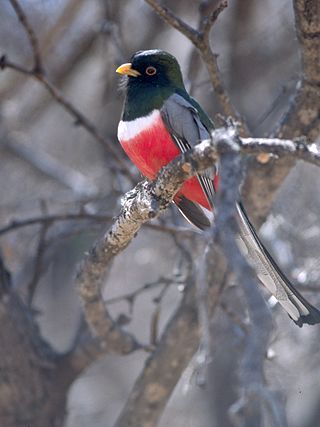
The elegant trogon, previously known as the coppery-tailed trogon, is a near passerine bird in the trogon family native to Central America. The etymology of the word trogon comes from the Greek word trōgein, meaning "to gnaw", which describes how this species prepares its nests in trees.

The Stenotritidae is the smallest of all formally recognised bee families, with only 21 species in two genera, all of them restricted to Australia. Historically, they were generally considered to belong in the family Colletidae, but the stenotritids are presently considered their sister taxon, and deserving of family status. Of prime importance is that the stenotritids have unmodified mouthparts, whereas colletids are separated from all other bees by having bilobed glossae.

Arizona elegans philipi, commonly known as the Painted Desert glossy snake, is a subspecies of glossy snakes, a nonvenomous colubrid endemic to North America.

Bumble Bee is a ghost town in the Bradshaw Mountains of Yavapai County, Arizona, United States, named for nearby Bumble Bee Creek. The townsite area is commonly used by RV campers in winter.

The bonytail chub or bonytail is a cyprinid freshwater fish native to the Colorado River basin of Arizona, California, Colorado, Nevada, New Mexico, Utah and Wyoming in the southwestern United States; it has been extirpated from the part of the basin in Mexico. It was once abundant and widespread in the basin, its numbers and range have declined to the point where it has been listed as endangered since 1980 (ESA) and 1986 (IUCN), a fate shared by the other large Colorado basin endemic fish species like the Colorado pikeminnow, humpback chub, and razorback sucker. It is now the rarest of the endemic big-river fishes of the Colorado River. There are 20 species in the genus Gila, seven of which are found in Arizona.
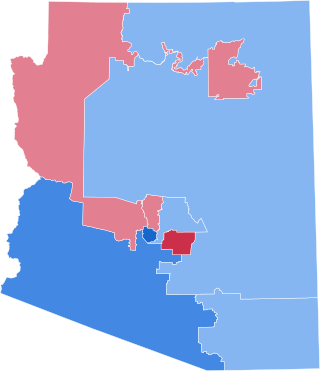
The 2008 congressional elections in Arizona were held on November 4, 2008, to determine who would represent the state of Arizona in the United States House of Representatives, coinciding with the presidential election. Representatives are elected for two-year terms; those elected would serve in the 111th Congress from January 4, 2009, until January 3, 2011.
Timothy S. Bee is a Republican politician and business owner who served in the Arizona State Senate from 2001 through 2008. He was first elected to the Arizona Senate in 2001 and left in 2009 due to term limits. In 2008, he was the Republican candidate for Arizona's 8th congressional district seat in the United States House of Representatives. He lost to incumbent Democrat Gabby Giffords. Arizona Governor Jan Brewer later appointed him to head her Tucson office.

The western terrestrial garter snake is a western North American species of colubrid snake. At least five subspecies are recognized.
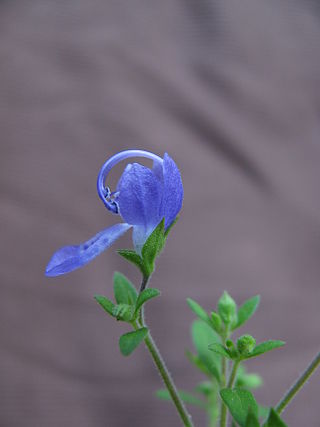
Trichostema dichotomum, commonly known as forked bluecurls, is a flowering plant in the mint family (Lamiaceae). The plant is found in the Midwestern and Eastern United States, Eastern Canada, and the Bahamas.
Beal was a railroad station on the Atlantic and Pacific Railroad line between Needles, California and Topock, Arizona from 1889. It was located 5 miles north on the railroad line to Needles from Mellen.
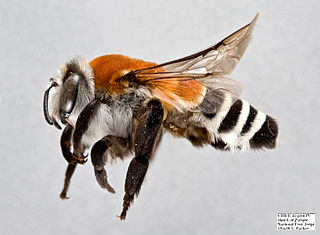
Caupolicana is a genus of bees in the family Colletidae, native to the Americas; most species are crepuscular in habit, visiting flowers only at dawn and/or dusk. There are over 50 known species, in 4 subgenera.
Caupolicana ocellata is a species of hymenopteran in the family Colletidae. It is found in Central America and North America.
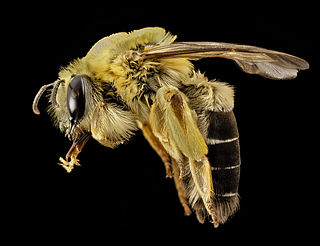
Diphaglossinae is a subfamily of bees in the family Colletidae. There are 9 genera and more than 130 described species in Diphaglossinae.
Caupolicana yarrowi is a species of hymenopteran in the family Colletidae. It is found in Central America and North America.














